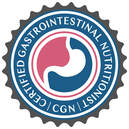|
Bread....so comforting yet so convoluted in the gut health arena. If your struggling with digestive issues it's likely you have had to avoid bread or swap traditional breads with gluten-free alternatives. Unfortunately, most gluten free bread out there is S H I T. Firstly, the quality is horrible and secondly it tastes like nothing. So I made it my mission to make a bread that was 1) easy to make, 2) highly nutritious and delicious, and 3) gut friendly. So are you ready?? The Gut Friendly Loaf is THE BREAD for all you folks struggling with gut issues. Why is that?? Well firstly, it is prepared from raw, organic gluten-free grains (not flours). When grains are soaked in acidic water an enzyme called phytase is activated which breaks down phytates. Phytates can be irritating to an inflamed gut and can bind to minerals in our food. However, folks with good gut health and good gut microbiome diversity can tolerate a higher phytate diet because lactobacillus and other bacterial species can produce their own phytase. Most folks with gut issues already struggle with malabsorption and have dysbiosis. Therefore they often find symptom improvement on grain free diet likely because of previous high consumption of poorly prepared grains & flours. Unfortunately, the amount of phytase found in grains is reduced when they are ground to flour because phytase is easily destroyed by high temperatures. Also the longer the flour is stored, the less phytase there is. Optimally flours are ground fresh, soaked and/or fermented, and used immediately. Today convenience often takes precedence over proper preparation. If you are interested in learning more check out this article from the Weston A Price Foundation. Interestingly, buckwheat (a gluten-free pseudo-grain) naturally contains very high amounts of phytase, whereas quinoa does not. Therefore, combining the two grains during the soaking process allows you to reap the benefits of both. Both quinoa and buckwheat when properly prepared are high in plant protein, fiber, and minerals. Plus, they are both considered low FODMAP, which means individuals with IBS and SIBO are likely to tolerate them, especially if properly prepared. Secondly, the bread is bound with chia seeds (also low FODMAP) in place of eggs or gums which often are not tolerated in gut sensitive individuals. Plus, this bread does not contain yeast, which also can be a common food trigger, and instead baking soda is used for leavening. And finally, this bread is naturally gluten-free and dairy-free, which also helps many. So with a lot of thought and care I have developed this recipe to serve you in the best of ways. If you have been avoiding grains or eating refined non-organic gluten-free breads, then it's time to give this Gut Friendly Loaf a try. Perhaps it will help bring back more joy to your plate and to your palate and even connect you more with your food. It is simple, nutritious, and very satisfying especially when toasted. I personally love it toasted with butter and local honey or I make open faced sandwiches. Follow me on Instagram for more fun ways to use this bread. Anyways, this is my holiday gift to you, your welcome! Buckwheat Quinoa Chia Bread
Makes ~16 slices or 8 servings INGREDIENTS 1 cup organic tan quinoa 1 cup organic raw buckwheat grouts Filtered water 1 tablespoon apple cider vinegar ¼ cup chia seeds 1 cup filtered water, divided 2 tablespoons lemon juice 2 tablespoons olive oil ½ teaspoon Redmond’s Real Sea Salt 1 teaspoon baking soda DIRECTIONS Place the quinoa and raw buckwheat grouts into a large glass or ceramic bowl, cover generously with filtered water, and stir in apple cider vinegar. Cover with a clean kitchen towel and let soak overnight or at least 12 hours at room temperature. Strain the soaked grains in a colander and rinse well. Allow the excess water to drain for about 5 minutes. Meanwhile, preheat oven to 350 degrees and mix the chia seeds with ½ cup filtered water. Stir with a fork and allow to gel, about 5-10 minutes. Meanwhile prepare your loaf pan and line with parchment paper. See the video here for instructions. Ideally use a small Pullman pan, but a typical banana bread loaf pan works too (you just may need to bake it a little longer). Once your grains are strained and your chia seeds are soaked you are ready for the next step. Transfer the strained grains into a high speed blender (I use a BlendTec) or food processor and add ½ cup filtered water, lemon juice, 2 tablespoons olive oil, and ½ teaspoon sea salt. Process until the mixture starts to become a batter and the blade runs well. Add the chia seeds and process some more until most of the quinoa seeds are blended but not all. Keeping some of the texture allows for a better rise. Finally, add the baking soda and pulse until well combined. Then transfer bread batter into the loaf pan and gently (not deeply) slice diagonal lines or X’s across the top to allow for a more uniform rise. Bake for 90 minutes at 350 degrees or until inserted toothpick comes out clean. Remove from pan, remove parchment paper, and allow to cool on cooling rack completely before cutting. Store in the refrigerator for a week. Nutrition Per Serving (2 slices): 200kcal, 30g carbs, 7g fat, 5g fiber, 6g protein. Note: If you cannot tolerate quinoa, millet or sorghum will likely work too. However, I have not tried this combination yet. Please let me know how it goes if you experiment. Alternatively, use 100% buckwheat.
1 Comment
|
RecipesI hope you enjoy my creative, flavorful, and nutrient dense approach to whole foods cooking. All recipes are gluten free. Archives
December 2022
Categories
All
|




 RSS Feed
RSS Feed


